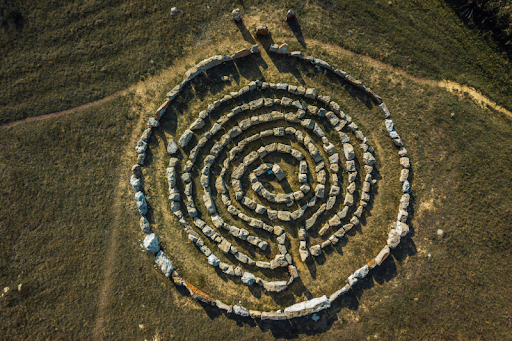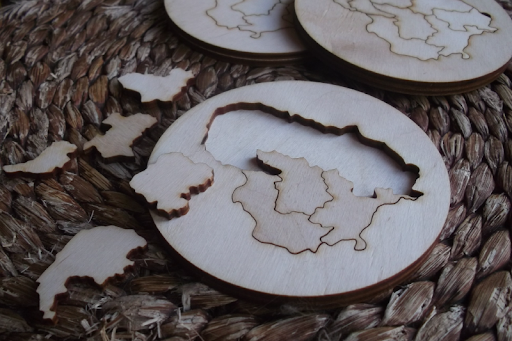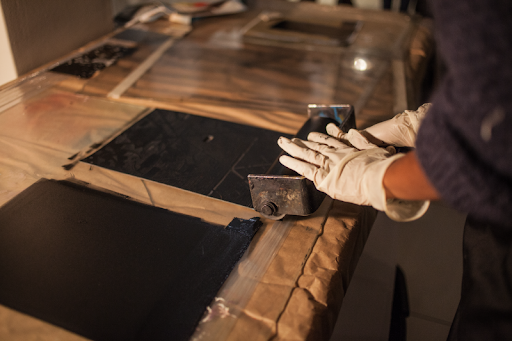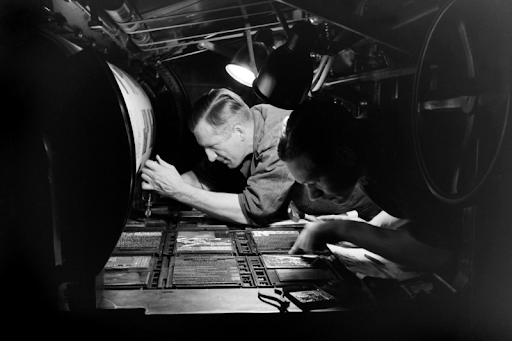The History of Puzzles
The zigzagging history of puzzles stretches back thousands of years to the time of ancient civilizations. While the term “puzzles” is used today to refer generally to jigsaw puzzles involving interlocking pieces users reassemble, the concept of solving puzzles and riddles encompasses a far broader range of skills-based games meant to test human ingenuity and knowledge.
So who invented the jigsaw puzzle? And when were puzzles invented in the first place? In this article, we’ll take a closer look at the piece-by-piece history of puzzles, the origins of the modern jigsaw puzzle, and what’s made these curious brain teasers so intriguing over the years.

Who Invented Puzzles?
Puzzles can take many forms, from mental math problems to labyrinths to the jigsaw puzzles we are familiar with today. Historians have never settled on one particular inventor of puzzles as a whole, but it is likely that they first appeared in Ancient Greece or Ancient Egypt. (The timelines, much like jigsaw puzzle pieces, get scattered and are hard to verify with so many years between then and now.)

When Were Puzzles Invented?
Some of the oldest puzzles were spoken riddles, codes, and what we would call, in today’s language, brainteasers. Sometime around 2,300 B.C. marks the origin of an idea fundamental to puzzles — the labyrinth, which was frequently depicted in Egypt and Greece. Many will recall the story of the labyrinth built to contain the monstrous Minotaur, as told in Greek mythology. Labyrinths, like mazes, were meant to deliberately confuse and challenge participants on their quest to escape or get to the center. Who invented puzzles, specifically, may never be known although the concept dates far into the past.
Around 1,000 B.C. and onward there were a variety of Chinese puzzle objects in circulation. These were as much about fun problem-solving as they were philosophical inquiries into the patterns and systems of the cosmos. Some of these puzzles include the Lo-Shu Square, Ba-gua, and various puzzle vessels.
In 200 B.C., intricate locking puzzles came into prominence and were found in multiple locations around the world. Around the same time, Archimedes used puzzles to solve geometric math problems; for example, his geometric dissection puzzle the Ostomachion (also called Archimedes’ Box).

Who Invented the Jigsaw Puzzle?
So who invented jigsaw puzzles? The very first jigsaw puzzle was created by John Spilsbury, an 18th-century British cartographer and map engraver. According to the history books, Mr. Spilsbury pasted one of his maps of Europe onto a piece of wood, cutting sections and countries into individual pieces.
He then gave this deconstructed map to schoolchildren in order to help them with their geography lessons. This concept of the reassembly of an image was a hit, eventually becoming popular with adults by the 1900s. It’s worth noting that Spilsbury’s first puzzles and those that followed, unlike the jigsaws familiar to us today, didn’t interlock — solving a puzzle, then, was a delicate undertaking where a slip of the hand or shake of the table could undo hours of hard work.

When Were Jigsaw Puzzles Invented?
Although the exact year is up for debate, most sources agree that John Spilsbury created the very first jigsaw puzzle in the 1760s, around 1767. These puzzles were primarily used for teaching purposes until the 1820s when they gained popularity as children’s games.
Interestingly, these weren’t referred to as “jigsaw puzzles” until later in the 1880s when the jigsaw itself was invented and used to cut the puzzles; these early puzzles were called “dissected puzzles.”

The Popularity of Puzzles
In the early 1900s puzzle popularity soared as a form of intellectually stimulating entertainment for adults. When we think of the history of jigsaw puzzles, we must also consider their transformation in material construction, accessibility, and difficulty level.
The jigsaw puzzles of the early 1900s posed significant challenges, as there were no pictures on the box to follow and no transition pieces to indicate which colors went beside others. Early production methods also resulted in jigsaw puzzles that, in today’s dollar, would cost around $150. We may speculate that this initial elitism in the adult world of puzzles resulted in a certain exclusivity that made them all the more alluring.
By 1909, however, production capacity increased with new lithographic printing techniques, saws, and the availability of plywood allowing puzzle makers to create high-quality products at scale quickly and cheaply.
In the same way that people rushed out like wildfire to get the daily or weekly newspapers for the latest headlines, many smaller-sized jigsaw puzzles came out weekly and were the talk of towns. Who could do the new puzzle the fastest? Was there a catch? This sparked an inventiveness for manufacturers as well, crafting puzzles in different shapes and including challenging snares, such as pieces that would fit together but create the wrong final image.

Another reason for this puzzle craze was the Great Depression. Puzzles were a sought-after distraction from the hardships of life. Additionally, they weren’t as expensive as before and could be used again and again, even rented out or given free with the purchase of products as a form of classic brand placement advertisement. That said, jigsaw puzzles were still considered to be a relative luxury and were most often owned by upper-class families.
And around WWII, puzzle manufacturers moved away from plywood (due to a shortage) and turned to types of cardboard to make their products. This further reduced costs, making jigsaws more available to the masses in the form familiar to us today.
Winding up to the present, through the long history of puzzles, these games have seen an incredible resurgence in popularity due to the COVID-19 pandemic. With people around the world stuck at home in lockdown, puzzles have become an engaging way to reconnect, tangibly, to an increasingly digital world. During the height of the pandemic, some manufacturers even sold out for months at a time due to the high demand.

Puzzles have remained a constant source of interest for human beings throughout history. They stimulate the mind, bring friends together, and challenge even the loftiest philosophers all while providing endless entertainment for people of all ages.
Now that you know all about puzzle history and invention, it’s time to get started on your next project. Shop Spilsbury’s newest jigsaw puzzles today!

